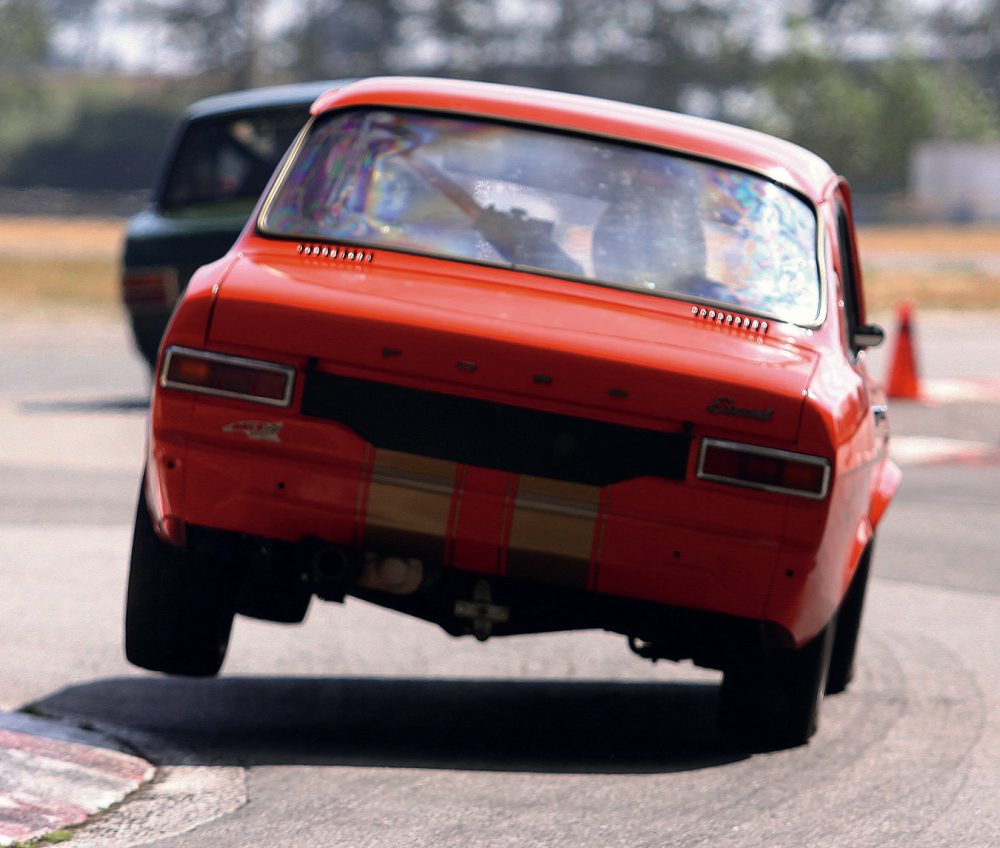For some—most, perhaps—a car is simply a method of transport, a way of getting from point A to point B. For others, it is something more: an object of desire; a thing of beauty; the embodiment of dreams and fantasies; a way to escape daily routine in a burst of pure, unbridled speed.
Tom Johnston belongs to the latter group. Labelling him a car enthusiast doesn’t quite capture the depth of Johnston’s passion for all things automotive; fanatic or zealot come closer to the mark. “I’ve been a car guy since I was, oh, this big,” he says, lowering his flattened palm to about waist level. A broad, adolescent grin spreads across his face as he remembers his first race. “I was driving my mother’s Morris Minor at an old airport circuit in Davidson, Saskatchewan,” he reminisces. “She looked at her car the next day, and said, ‘The tires are all worn funny.’ I said, ‘I have no idea how that happened.’ ”
These days, Johnston is able to indulge his need for speed by more honest means. As the chairman of the British Columbia Historic Motor Races, Johnston leads the organizing committee for the annual vintage motor races at Mission Raceway Park Road Course. Now in its 24th year, the event brings up to 100 vehicles from across Western Canada and the U.S. to a challenging two-kilometre, nine-turn road course on the banks of the Fraser River every summer, giving drivers and fans an opportunity to cheer on the roadsters of yesteryear as they skid around the hairpins and roar down the stretch.
Unlike NASCAR, the Indy or the Formula One circuit, in which the engineering of each vehicle is roughly comparable, vintage races highlight the quirks and driving personality of each car. Some entrants are clearly built for flat out speed, while others excel in the corners and curves. Organizers make an effort to keep races as evenly matched as they can; for example, they separate “production-based” cars from those “purpose-built” for racing. Even so, there remain wide variations in the makes and models in any given heat. While such groupings don’t always make for a “fair” race, that is a part of the charm of vintage racing, to say nothing of the entertainment value.
Walking down the rows of parking stalls between heats, gazing over the shoulders of the owner-cum-mechanics talking torque and tweaking their rides, it’s clear that while everyone is looking for the checkered flag, winning isn’t really the point. “People just like to see these cars out and running, and actually going reasonably hard,” Johnston says. “When you used to go to the Molson Indy downtown, only a quarter of the people had any idea of what was going on. The rest of them were just there for the party. Here, it’s not that way at all.”
As Johnston explains, there’s something about seeing old cars do fast tricks that stirs the soul of both old and young. “This is how they get hooked,” Johnston says, nodding his head sagely in the direction of a wide-eyed six-year old just off to his left. The boy is sitting quietly on a concrete divider, staring intently at a blue and white 1967 BMW 1600 a few metres away in the staging area. The driver revs the engine hard as the marshal directs him to the track, and the boy’s face comes alive in a look of wonder and delight. “These kids have probably never seen a racing car before in their lives,” Johnston says. “And then they decide, ‘Well, I’d like to do that.’ ” Judging from the breadth of the smile on the boy’s face, Johnston may be on to something.
Photos: Paul Bonner.










